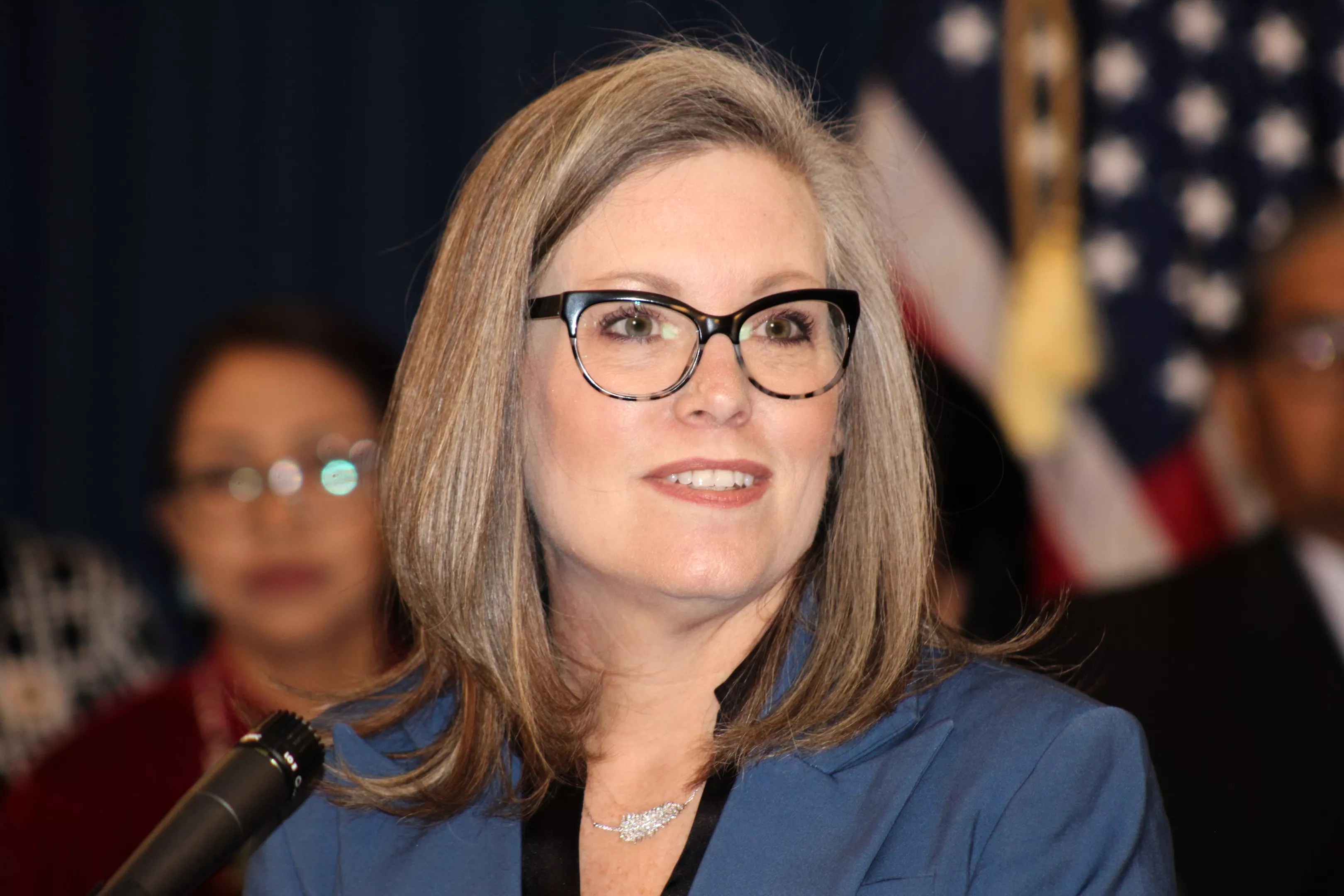
Elias Weiss

Audio By Carbonatix
Governor Katie Hobbs isn’t one for fanfare and showiness – a fact she reminded Arizonans of during a Wednesday morning press conference celebrating her 100th day in office.
The governor seemed uneasy, peering through her signature cat-eye frames at a horde of reporters in a dimly lit conference room on the second floor of the Executive Tower in downtown Phoenix.
Her brief remarks didn’t stray far from what she told Phoenix New Times on March 29 in an interview about the milestone. But she seemed resolute that a bipartisan budget compromise with Republicans was imminent.
“This election was not about Democrats versus Republicans. It was about sanity versus chaos,” Hobbs said at the conference. This has become her motto. She said it in her interview with New Times and on countless other occasions dating back to Election Day last November.
Phoenix, make your New Year’s Resolution Count!
We’re $11,000 away from reaching our $30,000 year-end fundraising goal. Your support could be what pushes us over the top. If our work has kept you informed, helped you understand a complex issue, or better connected you to your community, please consider making a contribution today.
“You’re going to continue to hear me say it because I’ve carried that sentiment with me to the Governor’s Office,” she said. “Every single day, I recommit to putting partisanship aside and governing our state with commonsense, Arizona-first solutions.”
Hobbs reaffirmed her commitment to finding solutions in education, border security, the opioid epidemic, reproductive freedom, corrections, infrastructure, and the water shortage.
She highlighted a March joint operation with the U.S. Department of Homeland Security that has already intercepted 100 pounds of cocaine, 700 pounds of meth, and 800 pounds of fentanyl at the Arizona-Mexico border.
Hobbs also trumpeted her prolific use of the veto stamp, which she has brandished four dozen times already – more than any Arizona governor in their first legislative session and just 10 vetoes away from matching Governor Janet Napolitano’s all-time record. To date, Hobbs has vetoed more bills than she has signed.
“I’ve had to use my veto pen a lot already, but part of my promise to bring sanity to our state government means stopping the conspiracy theories, the attacks on our freedoms, and the out-of-touch legislation that frankly isn’t doing anything to address serious issues,” Hobbs said. “I’ll continue to veto bills like that.”
Although Hobbs packed a lot into her condensed six-minute speech, at times, it was easy to forget that the event was meant to be her 100-day victory lap. She devoted more than half of her time at the podium introducing and thanking the guest speakers she invited.
Those hand-picked dignitaries – Gila River Indian Community Lieutenant Governor Monica Antone, Arizona Department of Housing Director Joan Serviss, and Republican Mesa Mayor John Giles – spoke longer than Hobbs did.
Simply put, she let her friends do the touting for her.
“She is truly a leader who has stepped up for our people,” Antone said.
Serviss piled on the praise. “Our governor recognizes that, by building an Arizona for everyone, every Arizonan has the opportunity to succeed,” she said.
Proving the veracity of her commitment to bipartisanship, Hobbs called on Giles – her longtime poster child of GOP support.
Since taking office, Hobbs has cut ribbons at microchip companies, advanced manufacturers, and aerospace outfits in Arizona’s third-largest city, he said.
“Katie Hobbs is off to a very great start,” Giles said. “The first mile of the race is just the first mile. To run a great race, you have to set the right pace and stay focused on the job ahead. Katie Hobbs knows this is a marathon, not a sprint. She understands that the state needs to tackle our challenges with sustainable, long-term solutions for all Arizonans.”
Hobbs fielded a few questions from reporters before concluding the conference.
“Looking back on these first 100 days, we’ve already taken action on so many urgent issues,” Hobbs said. “If we truly want to make Arizona the best place to live and raise a family, we have to address these critical issues. The first 100 days are just the beginning. There is so much more to do.”
Despite the overarching positivity of the conference, according to OH Predictive Insights in Phoenix, Hobbs’ approval rating is seven percent worse this week than it was when her last approval numbers were published in February. However, the shift is likely due to right-leaning voters recently switching from “no opinion” to “total disapproval.”